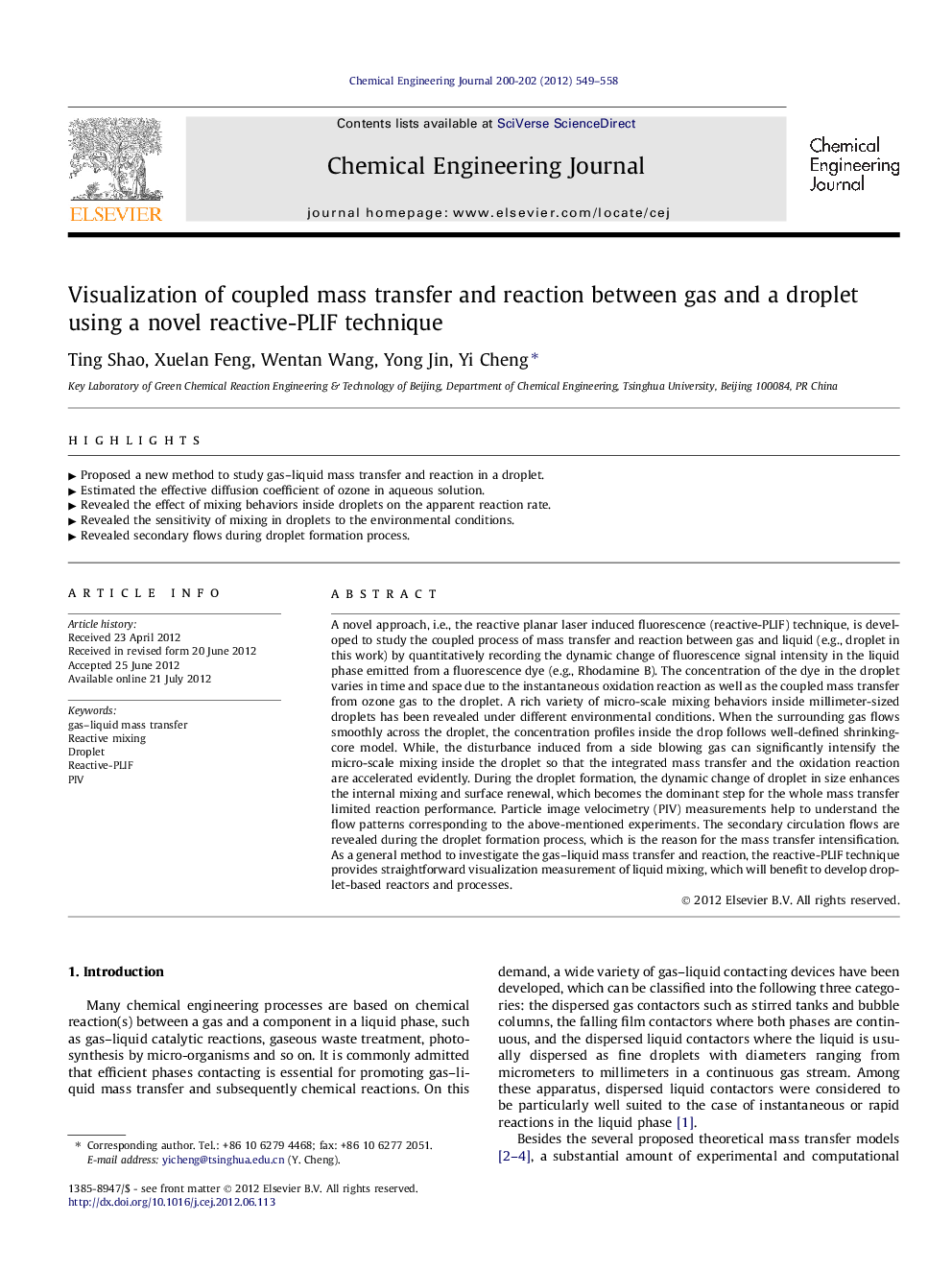| کد مقاله | کد نشریه | سال انتشار | مقاله انگلیسی | نسخه تمام متن |
|---|---|---|---|---|
| 149594 | 456434 | 2012 | 10 صفحه PDF | دانلود رایگان |

A novel approach, i.e., the reactive planar laser induced fluorescence (reactive-PLIF) technique, is developed to study the coupled process of mass transfer and reaction between gas and liquid (e.g., droplet in this work) by quantitatively recording the dynamic change of fluorescence signal intensity in the liquid phase emitted from a fluorescence dye (e.g., Rhodamine B). The concentration of the dye in the droplet varies in time and space due to the instantaneous oxidation reaction as well as the coupled mass transfer from ozone gas to the droplet. A rich variety of micro-scale mixing behaviors inside millimeter-sized droplets has been revealed under different environmental conditions. When the surrounding gas flows smoothly across the droplet, the concentration profiles inside the drop follows well-defined shrinking-core model. While, the disturbance induced from a side blowing gas can significantly intensify the micro-scale mixing inside the droplet so that the integrated mass transfer and the oxidation reaction are accelerated evidently. During the droplet formation, the dynamic change of droplet in size enhances the internal mixing and surface renewal, which becomes the dominant step for the whole mass transfer limited reaction performance. Particle image velocimetry (PIV) measurements help to understand the flow patterns corresponding to the above-mentioned experiments. The secondary circulation flows are revealed during the droplet formation process, which is the reason for the mass transfer intensification. As a general method to investigate the gas–liquid mass transfer and reaction, the reactive-PLIF technique provides straightforward visualization measurement of liquid mixing, which will benefit to develop droplet-based reactors and processes.
► Proposed a new method to study gas–liquid mass transfer and reaction in a droplet.
► Estimated the effective diffusion coefficient of ozone in aqueous solution.
► Revealed the effect of mixing behaviors inside droplets on the apparent reaction rate.
► Revealed the sensitivity of mixing in droplets to the environmental conditions.
► Revealed secondary flows during droplet formation process.
Journal: Chemical Engineering Journal - Volumes 200–202, 15 August 2012, Pages 549–558